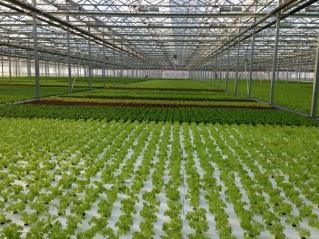On February 25, the NEOSCC Board voted unanimously to approve and endorse the Vibrant NEO 2040 Vision, Framework and Action Products. We are sharing an “Initiative A Day” so you can gain a better understanding of the vision and framework! If you would like to read all of the Initiatives, you can download them here: Recommendation and Initiatives. You can access a pdf of the entire vision chapter here. The vision chapter contains all 41 initiatives, development strategies, indicators, and matrices that identify how the recommendations, initiatives and indicators all relate.
Show your support for Vibrant NEO 2040 by adding your name to our Champions of Vibrant NEO 2040 list here.
Initiative 8.3: Review and amend local ordinances to allow for small- and moderate-scale urban farming on occupied and vacant parcels that are environmentally safe for growing food.
WHAT THIS MEANS. Zoning and land use are significant, yet easily changed, barriers to urban farming and growth of the local food system. Many municipalities ban certain agricultural uses on urban land outright, while others restrict eligible agriculture uses to personal gardens. In recent years, municipalities in Ohio and elsewhere have adopted amendments to local zoning to remove barriers, and in some cases encourage, urban farming. The cities of Cleveland and Youngstown have addressed urban agriculture by substantially revising their zoning codes. Some strategies for modifying zoning include:
• Creation of a dedicated urban agriculture zoning class within municipal code
• Creation of an urban agriculture overlay district for application to larger sections of the city
• Revision of existing discrete zoning classes where urban agriculture could be permitted
Municipalities in peer regions have largely opted to go with the latter strategy. Chicago adopted a citywide ordinance that amended zoning to allow a specified range of urban agricultural uses by right in certain zoning classes, while reserving others for special permits and prohibiting some outright. Pittsburgh’s approach is similar, though it is simplified through establishment of three primary use categories and three accessory use categories and less accommodating of animal/livestock cultivation.
WHY THIS IS IMPORTANT. Northeast Ohio communities with a high volume of vacant land should pay particular attention to how their zoning codes impact urban agriculture activities, and be proactive in creating zoning that encourages urban agriculture. Doing so would transition vacant land back into productive use, generating needed economic activity and accompanying revenue.
GETTING IT DONE. This initiative must be led by local jurisdictions, particularly municipalities. NEOSCC and regional planning partners, particularly COGs and Food Policy Councils, can research and provide syntheses of best practices on zoning that is friendly to urban farming, but the process of changing zoning and land use controls rests squarely with local jurisdictions, particularly municipalities.
Municipalities throughout Northeast Ohio should review their zoning codes to determine the degree to which existing code impedes agricultural uses, consider the range of such uses that are appropriate to their community, and devise strategies for making their codes friendlier to those uses. Municipalities should consider collaborating with local land banks and agricultural extensions to identify vacant parcels suitable for multiple scales of farming, and consider the needs of urban agriculture while engaging in the vacant land inventories proposed in 3.1 and 3.4. They should also consult with urban farmers on their needs and desires, and leverage agricultural and environmental expertise to ensure that parcels unsafe for food cultivation are either remediated or barred from use.
POLICY: Support integrating food system elements into urban, rural, and regional economic development plans: Incorporating food issues into economic development analyses and plans assures that the important economic contributions that the food sector makes to communities and regions are preserved and enhanced.
TOOL: Urban Agriculture Zoning Code: Urban agriculture is the practice of cultivating, processing, and distributing food in or around a village, town, or city. The City of Youngstown recently updated their zoning code and a section is dedicated to urban agriculture (i.e. Chapter 1102.02 (t)).
PILOT PROJECT: Cleveland Urban Agriculture Incubator Pilot Project: Six acres of land at East 83rd and Gill, donated from the City Land Bank, will be turned into a farm, due to $100,000 grants from the Ohio Department of Agriculture and the City of Cleveland, and $740,000 from the Ohio State University Extension, via the U.S. Department of Agriculture. The goals of the incubator are to promote entrepreneurship and access to fresh produce in an area that sorely needs both. If successful, the model will be replicated in other neighborhoods.
| Lead | Municipalities, Townships, Counties; Councils of Governments, Food Policy Councils |
| Target Community | Strategic investment areas, asset risk areas, cost risk areas |
| Implementation Complexity | Low |
These recommendations, initiatives, and products, are not one-size-fits all and some aspects of the initiatives won’t be applicable everywhere in the 12-county region. The Vibrant NEO 2040 Vision, Framework and Products are intended inspire and guide decision-making at the Metropolitan Planning Organization (MPO), Council of Government, and local levels to ensure that land use, transportation, and environmental considerations are simultaneously addressed by their processes. Ultimately, the implementation of Vibrant NEO 2040 is up to Northeast Ohio’s communities and residents. But regardless of the applicability of each initiative to any particular part of the region, the goal for each community within the Vision is the same: stability, prosperity, and a high quality of life for all of its residents.

